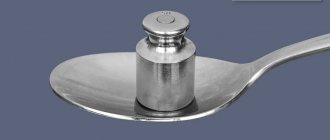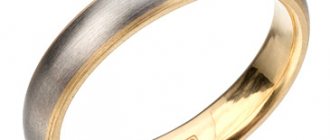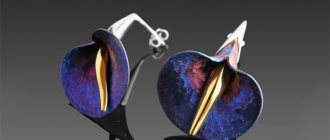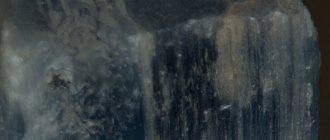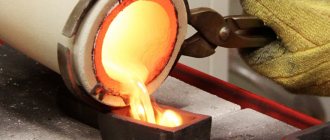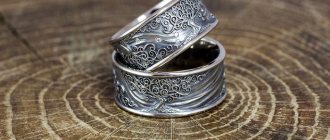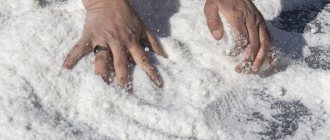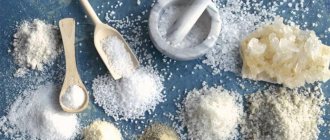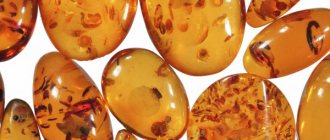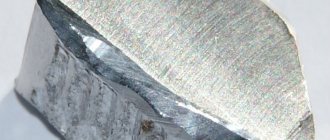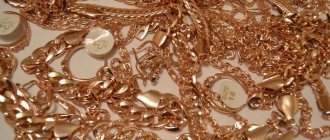Titanium is one of the most important structural materials because it combines strength, hardness and lightness. However, other properties of the metal are very specific, which makes the process of obtaining the substance difficult and expensive. And today we will consider the global technology for the production of titanium, we will briefly mention its properties and the scope of application of products.
Story
The discovery of titanium dioxide (TiO2) was made almost simultaneously and independently of each other by the Englishman W. Gregor and the German chemist M. G. Klaproth.
W. Gregor, studying the composition of magnetic ferruginous sand (Creed, Cornwall, England, 1791), isolated a new “earth” (oxide) of an unknown metal, which he called menaken. In 1795, the German chemist Klaproth discovered a new element in the mineral rutile and named it titanium. Two years later, Klaproth established that rutile and menaken earth were oxides of the same element, which gave rise to the name “titanium” proposed by Klaproth. Ten years later, the discovery of titanium took place for the third time: the French scientist L. Vauquelin discovered titanium in anatase and proved that rutile and anatase are identical titanium oxides. The first sample of titanium metal was obtained in 1825 by the Swede J. J. Berzelius. Due to the high chemical activity of titanium and the difficulty of its purification, a pure sample of Ti was obtained by the Dutch A. van Arkel and I. de Boer in 1925 by thermal decomposition of titanium iodide vapor TiI4.
Titanium did not find industrial use until the Luxembourger G. Kroll patented a simple magnesium-thermal method for the reduction of titanium metal from tetrachloride in 1940; This method, the Kroll process, remains one of the main ones in the industrial production of titanium to this day.
How and who is recommended to wear titanium jewelry
Jewelry is suitable for men and women, children and teenagers. Recommended to wear for people choosing areas of activity where they need to have such character qualities as self-control and determination.
Let us note the advantages of titanium products:
- Attractive appearance. Metal looks presentable and luxurious. Its beauty is not inferior to precious gold and silver.
- Does not cause allergies.
- Durability and high quality. Does not deform, does not change color, does not rust.
- Affordable price. Everyone can afford jewelry.
- Ease. Such products will not burden the owner’s hand or ears.
A titanium ring will decorate the hand of both a young girl and an adult lady. It is a symbol of constancy and femininity.
Before you buy a ring, try it on with special care. It will not be possible to cut the product, nor will it be possible to reduce the size.
Esotericists recommend that ladies wear a ring on their left hand, and men on their right.
Jewelers create exquisite jewelry for the stronger sex. Such a product will say a lot about the taste of the owner. They can also choose either a bracelet or a ring.
For medicinal purposes, it is better to wear bracelets. But in any case, the product must be in contact with the owner’s skin. This way the properties of the metal will be fully revealed.
It is easy to care for the product. Titanium is not afraid of detergents and moisture, and can withstand exposure to sunlight. Pure titanium is rarely used in jewelry. Depending on the impurities, the metal changes color, so you can choose jewelry based on personal preferences.
origin of name
The metal got its name in honor of the Titans, characters from ancient Greek mythology, the children of Gaia. The name of the element was given by Martin Klaproth in accordance with his views on chemical nomenclature, as opposed to the French school of chemistry, where they tried to name the element by its chemical properties. Since the German researcher himself noted the impossibility of determining the properties of a new element only from its oxide, he chose a name for it from mythology, by analogy with uranium he had previously discovered.
Titanium price
Modern manufacturers offer to purchase titanium at a price of 1,400 rubles per kilogram . It is sold in the form of sheets, wire and tubes. The cost of jewelry depends on the brand and the presence of stones. In the ranking of the most expensive metals for jewelry, titanium is assigned 8th place, right after silver. Its cost is estimated at 1700-1800 rubles per 1 gram.
Other elements are also added to titanium. The purer the brand (the fewer impurities), the higher the price. Jewelers love titanium for its discreet elegance, which is why it is often used to make jewelry for men.
Being in nature
Titanium is in 10th place in terms of prevalence in nature. The content in the earth's crust is 0.57% by weight, in sea water - 0.001 mg/l. In ultramafic rocks 300 g/t, in basic rocks - 9 kg/t, in acidic rocks 2.3 kg/t, in clays and shales 4.5 kg/t. In the earth's crust, titanium is almost always tetravalent and is present only in oxygen compounds. Not found in free form. Under conditions of weathering and precipitation, titanium has a geochemical affinity with Al2O3. It is concentrated in bauxites of the weathering crust and in marine clayey sediments. Titanium is transferred in the form of mechanical fragments of minerals and in the form of colloids. Up to 30% TiO2 by weight accumulates in some clays. Titanium minerals are resistant to weathering and form large concentrations in placers. More than 100 minerals containing titanium are known. The most important of them are: rutile TiO2, ilmenite FeTiO3, titanomagnetite FeTiO3 + Fe3O4, perovskite CaTiO3, titanite (sphene) CaTiSiO5. There are primary titanium ores - ilmenite-titanomagnetite and placer ores - rutile-ilmenite-zircon.
This is interesting
- It is the hardest metal in the world. Metal melts at temperatures of 3200 degrees and above. This property contributed to the fact that they could not work with titanium for a long time. There was no suitable equipment.
- Included in the TOP 10 in terms of prevalence.
- Artificial gemstones are made from it.
- The total number of world reserves is more than 700,000,000 tons.
- Cladophora algae is a source of titanium. The element is present in the human body, most of all in the spleen.
- Titanium jewelry is not afraid of moisture. You can even swim in them in the sea (ocean). They won't spoil.
- A monument made of titanium was erected in Moscow. The monument to cosmonaut Gagarin belongs.
- If titanium had not been discovered, man would not have been able to fly into space. In the construction of spaceships, the unique property of metal is used - high density and hardness combined with lightness. This is what allows you to develop supersonic speed.
Reserves and production
Main ores: ilmenite (FeTiO3), rutile (TiO2), titanite (CaTiSiO5).
As of 2002, 90% of mined titanium was used to produce titanium dioxide TiO2. World production of titanium dioxide was 4.5 million tons per year. Confirmed reserves of titanium dioxide (excluding Russia) are about 800 million tons. As of 2006, according to the US Geological Survey, in terms of titanium dioxide and excluding Russia, reserves of ilmenite ores amount to 603-673 million tons, and rutile ores - 49, 7-52.7 million tons. Thus, at the current rate of production, the world's proven reserves of titanium (excluding Russia) will last for more than 150 years.
Russia has the second largest reserves of titanium in the world, after China. The mineral resource base of titanium in Russia consists of 20 deposits (of which 11 are primary and 9 alluvial), fairly evenly distributed throughout the country. The largest of the explored deposits (Yaregskoye) is located 25 km from the city of Ukhta (Komi Republic). The deposit's reserves are estimated at 2 billion tons of ore with an average titanium dioxide content of about 10%.
The world's largest titanium producer is Russian.
Large deposits
China occupies the leading position, followed by the Russian Federation and North America (Canada). The largest deposit where titanium is mined in the Russian Federation is located on the territory of the Komi Republic and is called the Yaregskoye oil field.
The top ten countries for titanium mining include:
- USA;
- India;
- Australia;
- SOUTH AFRICA;
- Sweden;
- Norway;
- South Korea.
Receipt
A block of crystalline titanium (purity 99.995%, weight ≈283 g, length ≈14 cm, diameter ≈25 mm), manufactured using the van Arkel and de Boer iodide method.
Typically, the starting material for the production of titanium and its compounds is titanium dioxide with a relatively small amount of impurities. In particular, it can be a rutile concentrate obtained from the enrichment of titanium ores. However, the reserves of rutile in the world are very limited, and the so-called synthetic rutile or titanium slag, obtained from the processing of ilmenite concentrates, is more often used. To obtain titanium slag, ilmenite concentrate is reduced in an electric arc furnace, while iron is separated into the metal phase (cast iron), and unreduced titanium oxides and impurities form the slag phase. Rich slag is processed using the chloride or sulfuric acid method.
Titanium ore concentrate is subjected to sulfuric acid or pyrometallurgical processing. The product of sulfuric acid treatment is titanium dioxide powder TiO2. Using the pyrometallurgical method, the ore is sintered with coke and treated with chlorine, producing titanium tetrachloride vapor TiCl4:
TiO2 + 2C + 2Cl2 → TiCl4 + 2CO
The resulting TiCl4 vapors are reduced with magnesium at 850 °C:
TiCl4 + 2Mg → 2MgCl2 + Ti
In addition, the so-called FFC Cambridge process, named after its developers Derek Fray, Tom Farthing and George Chen from the University of Cambridge, where it was created, is now beginning to gain popularity. This electrochemical process allows for the direct, continuous reduction of titanium from its oxide in a molten mixture of calcium chloride and quicklime (calcium oxide). This process uses an electrolytic bath filled with a mixture of calcium chloride and lime, with a graphite sacrificial (or neutral) anode and a cathode made of a reducible oxide. When current is passed through the bath, the temperature quickly reaches ~1000–1100 °C, and the calcium oxide melt decomposes at the anode into oxygen and metallic calcium:
2CaO → 2Ca + O2
The resulting oxygen oxidizes the anode (in the case of using graphite), and calcium migrates in the melt to the cathode, where it reduces titanium from its oxide:
O2 + C → CO2 TiO2 + 2Ca → Ti + 2CaO
The resulting calcium oxide again dissociates into oxygen and metallic calcium, and the process is repeated until the cathode is completely converted into a titanium sponge or the calcium oxide is exhausted. In this process, calcium chloride is used as an electrolyte to impart electrical conductivity to the melt and mobility of active calcium and oxygen ions. When using an inert anode (for example, tin dioxide), instead of carbon dioxide, molecular oxygen is released at the anode, which pollutes the environment less, but the process in this case becomes less stable, and, in addition, in some conditions, the decomposition of chloride becomes more energetically favorable, rather than calcium oxide, which leads to the release of molecular chlorine.
The resulting titanium “sponge” is melted down and cleaned. Titanium is refined using the iodide method or electrolysis, separating Ti from TiCl4. To obtain titanium ingots, arc, electron beam or plasma processing is used.
Medicinal and beneficial properties
Titanium bracelets are popular among the population.
- The metal is believed to have a beneficial effect on the human body. Science has proven that titanium actively attracts oxygen and transfers it to the body.
- It is also credited with pain-relieving properties. A titanium bracelet relieves inflammation and pain. Titanium jewelry will be useful for people suffering from arthritis and headaches.
- In addition, titanium-based implants are used in medicine. Such products are considered durable. Moreover, the metal is highly biocompatible with the human body.
- The properties of the metal are used in pharmacology. It is used to paint medicines snow-white. Small bones are made from metal and implanted into a person’s ear. Thanks to this, hearing returns to a previously deaf person.
Physical properties
Titanium is a lightweight silvery-white metal. At normal pressure, it exists in two crystalline modifications: low-temperature α-Ti with a hexagonal close-packed lattice (hexagonal system, space group C
6
mmc
, cell parameters
a
= 0.2953 nm,
c
= 0.4729 nm,
Z
= 2) and high-temperature β-Ti with cubic body-centered packing (cubic system, space group
Im
3
m
, cell parameters
a
= 0, 3269 nm,
Z
= 2), transition temperature α↔β 883 °C, transition heat ΔH
=
3.8 kJ/mol (87.4 kJ/kg). Most metals, when dissolved in titanium, stabilize the β-phase and reduce the temperature of the α↔β transition. At pressures above 9 GPa and temperatures above 900 °C, titanium transforms into the hexagonal phase (ω-Ti). The densities of α-Ti and β-Ti are respectively 4.505 g/cm³ (at 20 °C) and 4.32 g/cm³ (at 900 °C). The atomic density of α-titanium is 5.67⋅1022 at/cm³.
The melting point of titanium at normal pressure is 1670 ± 2 °C, or 1943 ± 2 K (adopted as one of the secondary calibration points of the ITS-90 temperature scale. Boiling point 3287 °C. At a sufficiently low temperature (-80 °C), titanium becomes quite brittle.Molar heat capacity at normal conditions Cp
= 25.060 kJ/(mol·K), which corresponds to a specific heat capacity of 0.523 kJ/(kg·K).
Heat of fusion 15 kJ/mol, heat of evaporation 410 kJ/mol. Characteristic Debye temperature 430 K. Thermal conductivity 21.9 W/(m K) at 20 °C. The temperature coefficient of linear expansion is 9.2·10−6 K−1 in the range from −120 to +860 °C. Molar entropy of α-titanium S
0 = 30.7 kJ/(mol K).
For titanium in the gas phase, enthalpy of formation Δ H
0 f = 473.0 kJ/mol, Gibbs energy Δ
G
0 f = 428.4 kJ/mol, molar entropy
S
0 = 180.3 kJ/(mol K), heat capacity at constant pressure
Cp
= 24.4 kJ/(mol K)
The electrical resistivity at 20 °C is 0.58 μOhm m (according to other data 0.42 μOhm m), at 800 °C 1.80 μOhm m. Temperature coefficient of resistance 0.003 K−1 in the range 0…20 °C.
Plastic, weldable in an inert atmosphere. Strength characteristics are little dependent on temperature, but are highly dependent on purity and pre-treatment. For technical titanium, the Vickers hardness is 790–800 MPa, the normal elastic modulus is 103 GPa, and the shear modulus is 39.2 GPa. High-purity titanium, pre-annealed in vacuum, has a yield strength of 140–170 MPa, relative elongation of 55–70%, and Brinell hardness of 716 MPa.
It has a high viscosity and, during machining, is prone to sticking to the cutting tool, and therefore requires the application of special coatings to the tool and various lubricants.
At normal temperatures it is covered with a protective passivating film of TiO2 oxide, making it corrosion resistant in most environments (except alkaline).
The transition temperature to the superconducting state is 0.387 K. At temperatures above 73 Kelvin, titanium is paramagnetic. Magnetic susceptibility at 20 °C is 3.2·10−6. The Hall constant of α-titanium is +1.82·10−13.
Isotopes
Main article: Isotopes of titanium
Known isotopes of titanium with mass numbers from 38 to 63 (number of protons 22, neutrons from 16 to 41), and 2 nuclear isomers.
Natural titanium consists of a mixture of five stable isotopes: 46Ti (isotopic abundance 7.95%), 47Ti (7.75%), 48Ti (73.45%), 49Ti (5.51%), 50Ti (5.34%) .
Among the artificial isotopes, the longest-lived are 44Ti (half-life 60 years) and 45Ti (half-life 184 minutes).
Metal composition
The metal exists in two modifications.
- α-Ti - exists up to a temperature of 883 C, has a dense hexagonal lattice.
- β-Ti – has a body-centered cubic lattice.
The transition occurs with a very small change in density, since the latter gradually decreases when heated.
- During operation of titanium products, in most cases they deal with the α-phase. But when melting and manufacturing alloys, metallurgists work with the β-modification.
- The second feature of the material is anisotropy. The elasticity coefficient and magnetic susceptibility of a substance depend on the direction, and the difference is quite noticeable.
- The third feature is the dependence of the properties of the metal on its purity. Ordinary technical titanium is not suitable, for example, for use in rocket science, because due to impurities it loses its heat resistance. In this area of industry, only extremely pure substances are used.
This video will tell you about the composition of titanium:
Chemical properties
It is resistant to corrosion due to its oxide film, but when crushed into powder, as well as in thin shavings or wire, titanium is pyrophoric. Titanium dust tends to explode. Flash point: 400°C. Titanium shavings are fire hazardous.
Titanium is resistant to dilute solutions of many acids and alkalis (except HF, H3PO4 and concentrated H2SO4). Titanium is resistant to wet chlorine and aqueous chlorine solutions.
It easily reacts even with weak acids in the presence of complexing agents, for example, it interacts with hydrofluoric acid HF due to the formation of the complex anion [TiF6]2−. Titanium is most susceptible to corrosion in organic environments, since in the presence of water a dense passive film of titanium oxides and hydride is formed on the surface of a titanium product. The most noticeable increase in the corrosion resistance of titanium is noticeable when the water content in an aggressive environment increases from 0.5 to 8.0%, which is confirmed by electrochemical studies of the electrode potentials of titanium in solutions of acids and alkalis in mixed aqueous-organic media.
When heated in air to 1200 °C, Ti lights up with a bright white flame with the formation of oxide phases of variable composition TiOx. The hydroxide TiO(OH)2 xH2O is precipitated from solutions of titanium salts, and by careful calcination the oxide TiO2 is obtained. Hydroxide TiO(OH)2 xH2O and dioxide TiO2 are amphoteric.
TiO2 reacts with sulfuric acid during prolonged boiling. When fused with soda Na2CO3 or potash K2CO3, TiO2 oxide forms titanates:
TiO2 + K2CO3 → K2TiO3 + CO2
When heated, Ti interacts with halogens (for example, with chlorine at 550 °C). Titanium tetrachloride TiCl4 under normal conditions is a colorless liquid that fumes strongly in air, which is explained by the hydrolysis of TiCl4, water vapor contained in the air and the formation of tiny droplets of HCl and a suspension of titanium hydroxide.
By reducing TiCl4 with hydrogen, aluminum, silicon, and other strong reducing agents, titanium trichloride and dichloride TiCl3 and TiCl2 are obtained - solid substances with strong reducing properties. Ti interacts with Br2 and I2.
With nitrogen N2 above 400 °C, titanium forms nitride TiNx (x = 0.58–1.00). Titanium is the only element that burns in a nitrogen atmosphere.
When titanium interacts with carbon, titanium carbide TiCx (x = 0.49–1.00) is formed.
When heated, Ti absorbs H2 to form a compound of variable composition TiHx (x = 2.00–2.98). When heated, these hydrides decompose, releasing H2.
Titanium forms alloys and intermetallic compounds with many metals.
Photo and appearance of metal
The metal has a silvery color and a metallic luster. The metal gained popularity among jewelers for its discreetness and excellent quality. Titanium is universal; it harmonizes perfectly with silver, white and yellow gold. This property allows the jeweler to create complex jewelry.
Do you wear titanium?
The metal is not subject to corrosion. It will not fade after long-term use.
Application
In pure form and in the form of alloys
Titanium Alloy Watch
Blank of a titanium frame for an F-15 fighter before and after pressing on an Alcoa 45 thousand ton stamping press, May 1985
The use of titanium metal in many industries is due to the fact that its strength is approximately equal to the strength of steel, although it is 45% lighter . Titanium is 60% heavier than aluminum, but is about twice as strong.
- Titanium in the form of alloys is the most important structural material in aircraft, rocket and shipbuilding.
- The metal is used in the chemical industry (reactors, pipelines, pumps, pipeline fittings), military industry (body armor, aviation armor and fire barriers, submarine hulls), industrial processes (desalination plants, pulp and paper processes), automotive industry, agricultural industry , food industry, sporting goods, jewelry, mobile phones, light alloys, etc.
- Titanium is physiologically inert, which is why it is used in medicine (prostheses, osteoprostheses, dental implants), in dental and endodontic instruments, and piercing jewelry.
- Titanium casting is performed in vacuum furnaces into graphite molds. Vacuum lost wax casting is also used. Due to technological difficulties, it is used in artistic casting to a limited extent. The first monumental cast titanium sculpture in the world is the monument to Yuri Gagarin on the square named after him in Moscow.
- Titanium is an alloying additive in many alloy steels and most special alloys.
- Nitinol (nickel-titanium) is a shape memory alloy used in medicine and technology.
- Titanium aluminides are very resistant to oxidation and heat-resistant, which, in turn, determined their use in aviation and automotive manufacturing as structural materials.
- Titanium is one of the most common getter materials used in high-vacuum pumps.
There are many titanium alloys with different metals. Alloying elements are divided into three groups, depending on their effect on the temperature of the polymorphic transformation: beta stabilizers, alpha stabilizers and neutral strengtheners. The first ones lower the transformation temperature, the second ones increase it, the third ones do not affect it, but lead to solution strengthening of the matrix. Examples of alpha stabilizers: aluminum, oxygen, carbon, nitrogen. Beta stabilizers: molybdenum, vanadium, iron, chromium, nickel. Neutral hardeners: zirconium, tin, silicon. Beta stabilizers, in turn, are divided into beta isomorphic and beta eutectoid-forming.
The most common titanium alloy is the Ti-6Al-4V alloy (VT6 in the Russian classification), containing about 6% aluminum and about 4% vanadium. Based on the ratio of crystalline phases, it is classified as an (α+β) alloy. Up to 50% of mined titanium is used for its production.
Ferrotitanium (an alloy of titanium with iron containing 18-25% titanium) is used in ferrous metallurgy to deoxidize steel and remove unwanted impurities dissolved in it (sulfur, nitrogen, oxygen).
In the 1980s, about 60-65% of titanium mined in the world was used in the construction of aircraft and rockets, 15% in chemical engineering, 10% in energy, 8% in shipbuilding and for water desalination plants.
In the form of connections
- White titanium dioxide (TiO2) is used in paints (such as titanium white) and in the production of paper and plastics. Food additive E171.
- Organo-titanium compounds (for example, tetrabutoxytitanium) are used as a catalyst and hardener in the chemical and paint and varnish industries.
- Inorganic titanium compounds are used in the chemical electronics and fiberglass industries as additives or coatings.
- Titanium carbide, titanium diboride, and titanium carbonitride are important components of superhard materials for metal processing.
- Titanium nitride is used to coat instruments, church domes and in the production of costume jewelry, as it has a color similar to gold.
- Barium titanate BaTiO3, lead titanate PbTiO3 and a number of other titanates are ferroelectrics.
- Titanium tetrachloride is used to iridize glass and to create smoke screens.
Analysis of consumption markets
In 2005, Titanium Corporation
published the following estimate of titanium consumption in the world:
- 60% - paint;
- 20% - plastic;
- 13% - paper;
- 7% - mechanical engineering.
Prospects for the development of titanium raw materials in Russia
Titanium is one of the elements widely used in industrial production. The most important types of titanium products are pigment titanium dioxide (world production is about 3 million tons of TiO2 per year) and metallic titanium (60-70 thousand tons of Ti per year). Almost 90% of titanium dioxide is used as a filler in rubber, paper, plastics, in matting artificial fibers, as a silicone rubber enhancer, in semiconductor ceramics, etc. Titanium metal and its alloys, which have high corrosion resistance and a good combination of mechanical and technological properties, are used in a wide variety of industries: aviation, space, chemical, metallurgical, mechanical engineering, shipbuilding.
The main producers of titanium dioxide pigment are the USA, Germany, Japan, England, France (about 70% of world production). Titanium metal is produced in the USA, Japan, Great Britain, Kazakhstan, Ukraine and China.
In the CIS countries, the leading places in explored reserves of titanium ores are occupied by the Russian Federation (58.5%) and Ukraine (40.2%). However, in Russia there are mainly undeveloped deposits from which titanium concentrate is not produced. The main producer of titanium raw materials (ilmenite, rutile) in the CIS is Ukraine. In general, a large number of titanium deposits are known in the CIS, which belong to various industrial-genetic types (Table 1). According to the conditions of formation, they are divided into igneous, weathering crust (residual), placers and metamorphosed deposits. In the CIS, the leading role in the production of titanium concentrates is played by ancient coastal marine (ilmenite, rutile, zircon, etc.), as well as alluvial and alluvial-deluvial placers of ilmenite and its residual deposits, concentrated mainly in Ukraine. Of the large number of titanium-containing minerals, the main ones of industrial importance are ilmenite, rutile, leucoxene, and anatase. Perovskite, sphene and titanomagnetite are promising.
Industrial ores contain 0.5-35% TiO2, disseminated ores of igneous deposits usually contain 7-10% TiO2. Placers are often characterized by lower titanium contents. However, the relatively simple production of titanium concentrates from placers makes their operation profitable. The extracted material is processed at processing plants, where independent concentrates are obtained: ilmenite, rutile, zircon, staurolite, etc. Most of the resulting titanium concentrates contain a whole group of impurity elements (Sc, V, Ta, Nb, TR, Ga, etc.), of industrial value. Of particular value among them is the expensive scandium, which is constantly contained in ilmenite (up to 0.02%) and rutile (up to 0.01%). In 1995, in the USA, 1 g of Sc2O3 (99.9%) cost $63.2, and 1 g of metallic scandium (99.99%) cost $125 (according to a commercial catalogue).
Currently, titanium concentrates are not obtained from ores of primary deposits in the CIS. Abroad, the main producers of ilmenite concentrate from primary deposit ores are Canada and Norway. In total, they account for about 30% of the world's annual titanium production.
In Russia, all the most important titanium deposits are located in nine metallogenic provinces. The main titanium ore provinces of Russia, in which 81.6% of its reserves and 52.4% of titanium resources are concentrated, are: Timan (Yagerskoye and other deposits), Oklemo-Stanovaya (Kruchininskoye, Bolshoy Seyim, etc.), Ural (Medvedevskoye, Kopanskoye, etc.) (Fig. 1). Among these provinces, Timan stands apart, characterized by a unique genetic type of titanium deposits represented by oil-bearing leucoxene sandstones. Ore reserves are significant, exceeding tens of millions of tons at individual sites. The content of leucoxene in them ranges from tens to several hundred kg/m3 (Yaregskoye and others). The TiO2 content in sandstones is on average 10.5%. The content of leucoxene in the heavy fraction is up to 80-90%. Niobium, tantalum, and zirconium are present as important rare metal impurities. The concentrate obtained after enrichment, containing 45-55% TiO2, 34-40% SiO2 and 5-35% oil, after oil separation is suitable for the production of pigment titanium dioxide.
Another promising type of titanium deposits for Russia is igneous (deposits of the Kolar, Dzhugdzhur, Baladek anorthosite massifs). The Bolshoy Seyim deposit (Amur region) may be of interest, its titanomagnetite-ilmenite ores contain 5-15% TiO2. From them, conditioned ilmenite concentrate (46% TiO2), magnetite (63% Fetotal, 0.7% V2O5), apatite (40% P2O5) concentrate was obtained. TiO2 reserves at the field are 23 million tons. The apatite-titanomagnetite ores of the Dzhugdzhur anorthosite massif, where three main ore fields are distinguished: Bogidesskoye, Gayumskoye and Maimakanskoye, deserve attention. These ores contain: 10-90% apatite, 50-70% titanomagnetite, up to 10% ilmenite. The concentration of TiO2 in titanomagnetite is 5.4-15.5%. A set of technological works has been completed to obtain ilmenite concentrate from the ores of the Medvedevsky, Kopansky and Matkalsky deposits (Ural), from which it is fundamentally possible to obtain titanium slag suitable for the production of pigment TiO2. These same deposits have significant reserves of vanadium, the production of which is also possible.
In the Russian Federation, ancient marine placers located on the Russian plate (Lukoyanovskoye, Central), as well as some placers in Siberia (Tuganskoye, Tulunskoye deposits) are promising for titanium. In Russia as a whole, a noticeable expansion of the mineral resource base of titanium is possible due to its significant predicted resources, which exceed reserves in categories A+B+C1+C2 by approximately two times (Fig. 1).
Quite numerous deposits of titanomagnetite stand out as a significant potential raw material for titanium (Table 2). They are confined to a number of igneous mafic-ultramafic formations. These deposits are found in the European part of the Russian Federation, in the Urals, and in Siberia. The average TiO2 content in the titanomagnetite concentrate of some deposits can reach 15-20% (Pudozhgorskoye, etc.). In addition, titanomagnetite ores of individual deposits are already the main source of vanadium in Russia (Gusevogorskoye, Pervouralskoye deposits). In the future, it is possible to obtain titanium, scandium, manganese, and gallium from them. Reserves of titanomagnetite ores in some deposits can reach several billion tons. Their share in the iron reserves of the CIS in 1990 was 7.7%, and production 8.3%. When melting the titanomagnetite contained in it, the titanium goes into slag, from where it can be extracted. Increasing the complexity of the use of titanomagnetite for the Russian Federation is significant, and the titanium contained in it can play an important role. Even the titanomagnetites of the Gusevogorsk deposit, which are relatively low in titanium content (on average 3.3% TiO2), yield blast furnace slags that contain 9.4% TiO2.
Converter slag remaining after the processing of vanadic cast iron is also characterized by increased titanium content. It is possible that in the future it will be advisable to obtain from converter slag not only V2O5, but also titanium dioxide, alumina and manganese.
The production of titanium, as well as Al, TR, Nb from slags that are formed as a result of smelting concentrates obtained from perovskite-titanium magnetite ores (Afrikanda deposit and others on the Kola Peninsula) is promising. These slags contain, wt%: 39.9-42.2 TiO2; 5.8-6.6 Al2O3; 1.6-2.1 TR2O3; 0.4 Nb2O5. The significant scale of perovskite-titanium magnetite ores allows us to count on broad opportunities for their complex use.
An important direction in the development of the production of titanium raw materials is the production of artificial rutile from natural ilmenite concentrates and titanium slag (Fig. 2). Currently, the world produces ~830 thousand tons of synthetic rutile, a product rich in TiO2 content, suitable for the production of pigment titanium dioxide using the chlorine method.
The value of titanium raw materials is largely (~50%) determined by the rare metals present in it. With the chlorine method of processing titanium concentrates, rare metals accumulate in chloride sublimates in such quantities that, using existing technological methods, scandium trioxide, chromium concentrate, iron oxide pigments, manganese salts, coagulants for wastewater treatment, etc. can be obtained as commercial products (Fig. 3 ).
Thus, the resources of titanium raw materials in Russia are significant and are able to meet the needs for titanium for many decades. However, as a result of the collapse of the USSR, Russia was left both without developed deposits and without leading processing enterprises. The existing Bereznikovsky titanium-magnesium plant is currently not able to ensure the future development of the titanium industry of the Russian Federation, the needs of which are estimated at 300-675 thousand tons of TiO2 / year (Bykhovsky, Zubkov, 1996). Such large fields as Yaregskoye, Medvedevskoye, Bolshoy Seyim and others are not prepared for exploitation. At the same time, there are significant difficulties and shortcomings in the technology for producing titanium dioxide from their concentrates.
In this regard, the development of Russia’s own titanium industry (in addition to increasing reserves) should be determined by the technology of complex processing of concentrates from large titanium deposits located in regions with developed infrastructure. The problem of complexity is solved in the case of the introduction of chlorine technology, which makes it possible to extract from raw materials, in addition to titanium, such valuable metals as scandium, vanadium, chromium, niobium, etc. and can be practically waste-free and environmentally friendly.
Magazine "Mining Industry" No. 4 1996, p. 23
Where can you find Mithril Ore in Terraria?
Mythril Ore (English: Mythril Ore) is a durable metal of gray-green color, appears in hard mode after the destruction of at least 2 Demonic Altars. Every subsequent 3 altars add new deposits. Can be found underground at any depth, most often at the cave level.
Interesting materials:
How to connect mobile payment on Beeline? How to connect Wi-Fi on Lenovo? How to connect paid channels on MTS? How to activate roaming abroad on MTS? How to connect to unlimited Internet on the Unlimited tariff? How to connect to a wireless network on Windows 10? How to find available connections? How to find the network connections folder? How to set up an Internet connection via cable? How to set up an Internet connection on Windows XP?
